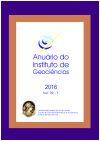Evaluation of a Soil in Terms of Resistance to Simple Compression, Tensile Strength for Diametral Compression and Resilience Module, Considering Results of Different Types of Compactation
DOI:
https://doi.org/10.11137/2016_3_41_47Keywords:
Compactation Proctor, Types of compactation, Mechanical properties.Abstract
In Brazil, the laboratory testing of Proctor compaction is regulated by the Brazilian Association of Technical Standards (NBR 7182/1986) and the National Department of Infrastructure and Transport (DNIT - ME 164/2013 and DNIT - ME 162/1994). The standards show various alternatives for performing compaction Proctor, however, it appears that the mechanical behavior of a compacted soil is a function of void content, degree of saturation and especially soil structure directly influenced by the compaction process adopted. This study aimed to compare four different compactation processes (mechanical with reuse, manual with reuse, manual without reuse and manual without reused with wetting of the sample 24 hours prior to compactation) using the intermediate energy, with the intention of assessing their effect on properties of compressive strength, tensile strength and resiliency of a soil. The experimental phase was divided into three (3) stages: Soil characterization tests, Proctor compaction tests and mechanical tests (resistance to simple compression - RCS, Tensile Strength for Diametral Compression - RT and Resilience Module - MR). Through this research, it was found that the type of compactation used exerted a significant influence on the results, because in general the RT values, RCS and MR obtained in manual compactation without reuse 24h were higher than the other compactions.
Downloads
Downloads
Published
How to Cite
Issue
Section
License
This journal is licensed under a Creative Commons — Attribution 4.0 International — CC BY 4.0, which permits use, distribution and reproduction in any medium, provided the original work is properly cited.















